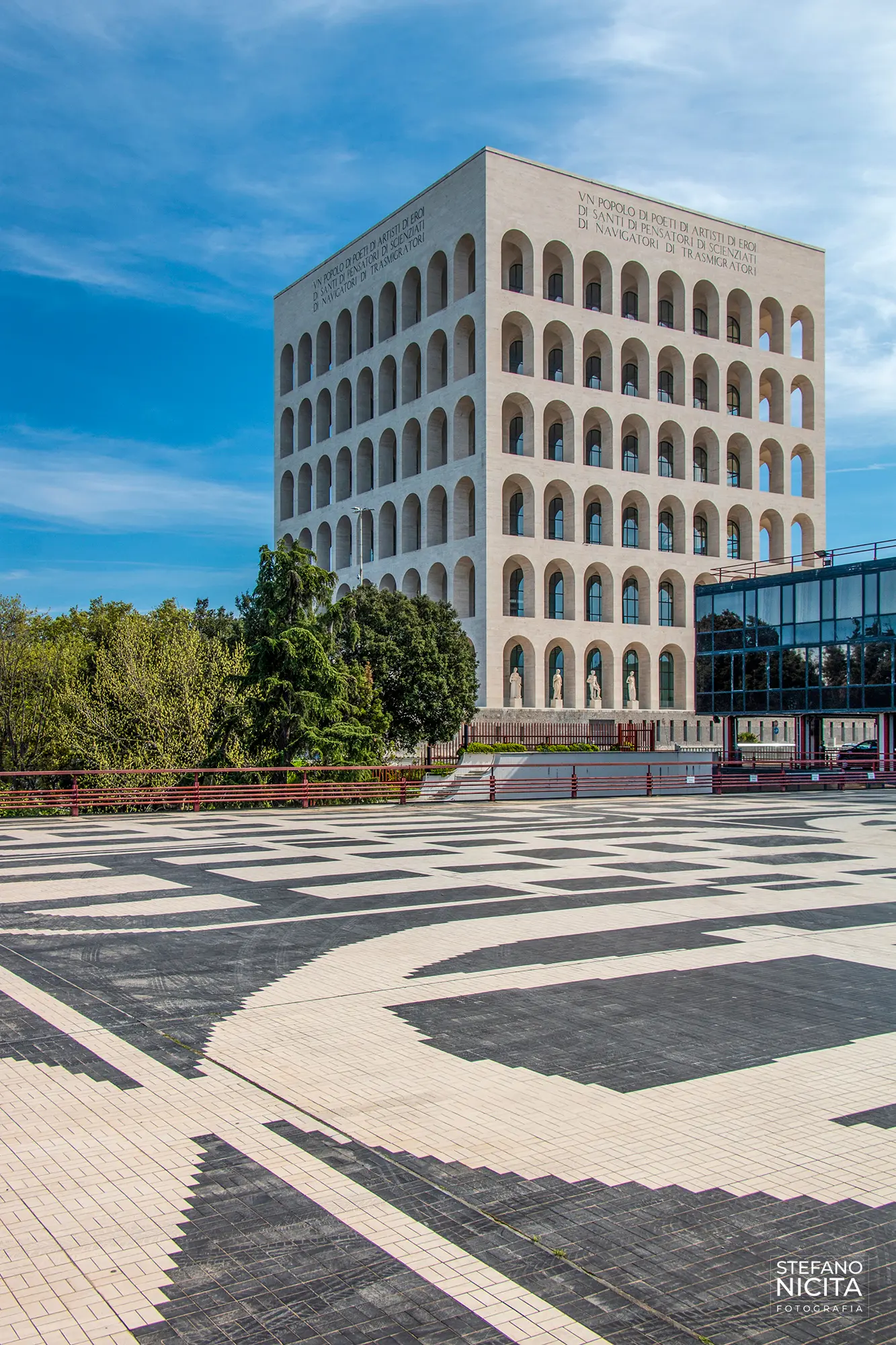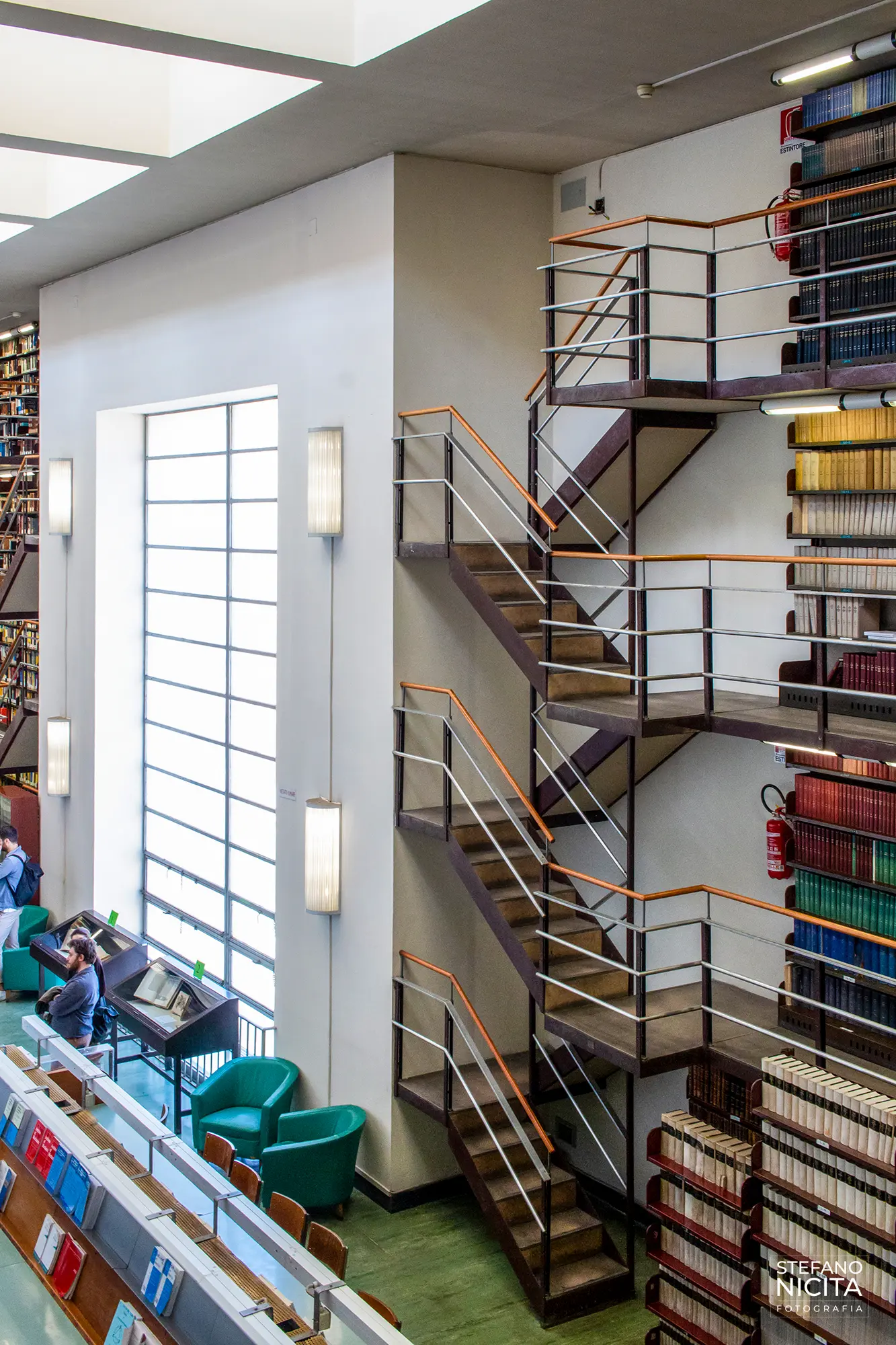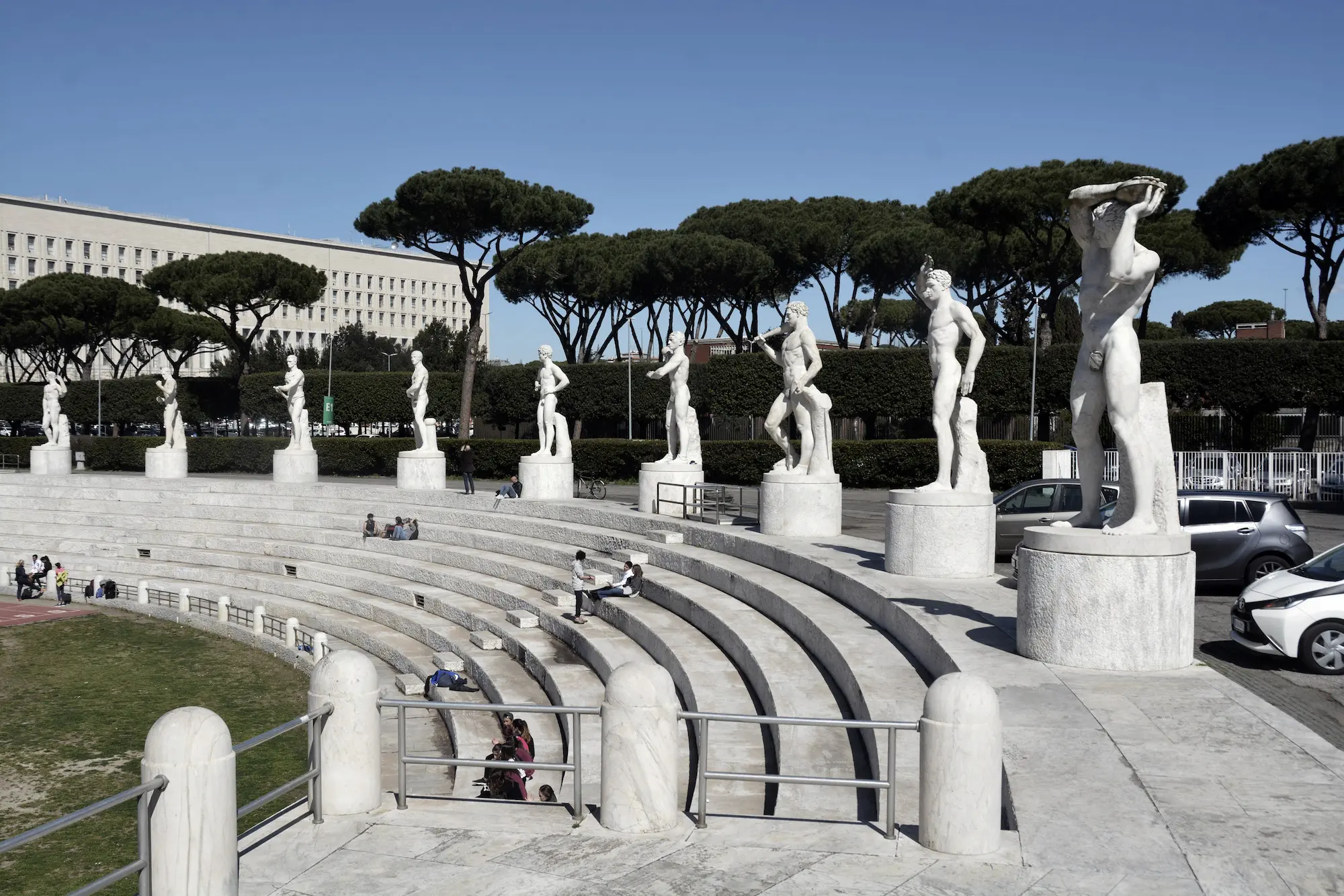
Rationalist Rome
Rome Center - Southern Rome
EUR, Foro Italico, Città Universitaria
Guided by the spirit of interwar modernity, Rationalist Rome reveals ideologically charged architectures, where the ambitions of a newly unified nation converged with the authoritarian pressures of the Fascist regime. From the ceremonial axis of Via dei Fori Imperiali to the rigorously planned EUR district, we trace how modernist ideals were absorbed, reinterpreted, and instrumentalized to forge a new visual identity. We examine how architecture became a vehicle for power—stripped of ornament yet dense with meaning—drawing from European avant-gardes while remaining rooted in Roman ancient tradition. Along the way, we will encounter disciplined abstractions, metaphysical piazzas, and monumental rhetoric rendered in travertine, brick, and symmetry. These spaces have inspired landmark films (from Michelangelo Antonioni’s L’Eclisse to Federico Fellini’s Boccaccio ’70) and evoke the enigmatic, melancholic cityscapes of Giorgio de Chirico’s paintings.
At a time when the legacy of “difficult heritage” is under renewed scrutiny, this walk aims to be both enjoyable and thought-provoking, engaging with questions of restoration, display, and the critical preservation of Fascist-era architecture.
EUR: A City Within the City
Originally conceived as the grand stage for the cancelled 1942 Universal Exposition, EUR was designed to be a city unto itself—monumental, self-sufficient, and ideologically driven. While construction was rooted in Fascist ambition, the project was interrupted by World War II and only completed in later decades. Yet throughout its development, EUR was also envisioned as a city-park, where green space played an essential structural role. Trees, shrubs, and bursts of color were carefully planned to offset the severity of the district’s white stone architecture. Planned by architect Marcello Piacentini, EUR’s urban layout follows a striking pentagonal design, organized around monumental axes where the district’s most iconic buildings are positioned. As we walk these broad, symbolic boulevards, we will explore key landmarks like the Palazzo della Civiltà Italiana, Palazzo dei Congressi, Palazzo dello Sport and La Nuvola.
Tour Details
Duration: One-day format
Transport: Walking
Languages: English, German, Italian
Max Group Size: 15

Città Universitaria: A City for the Mind
Rome’s Città Universitaria, conceived in the late 1930s, is more than a university campus—it is a manifesto in stone. Marcello Piacentini’s masterplan fuses classical Roman order with insights from American campus design: axial symmetry meets open green spaces, monumental scale meets day-to-day functionality. At its center, Piacentini’s Rectorate anchors a civic stage framed by the Law and Humanities buildings, with the Minerva statue by artist Arturo Martini presiding like a modern Athena. Designed by the leading minds of Italian Rationalism (Giò Ponti, Giuseppe Pagano, Pietro Aschieri and others) the campus unfolds as a living experiment in proportion, discipline, and architectural authorship. More than a campus, it is a spatial argument—designed to educate the eye as much as the mind.
Tour Details
Duration: Half-day format
Transport: Walking
Languages: English, German, Italian
Max Group Size: 15

Foro Italico: Monumental Athletics
Built in the 1930s as a vast sports citadel, Foro Italico exemplifies the theatrical urbanism of the Fascist era. Conceived as a grand stage for the glorification of the body, the state, and national identity, the complex features triumphal axes, heroic mosaics, and the iconic marble-clad Stadio dei Marmi, where classical statuary meets modern athletic ideals. The addition of the Stadio Olimpico and the district’s continued role as a venue for sports has prolonged its life beyond its original ideological frame.
Tour Details
Duration: Half-day format
Transport: Walking
Languages: English, German, Italian
Max Group Size: 15

